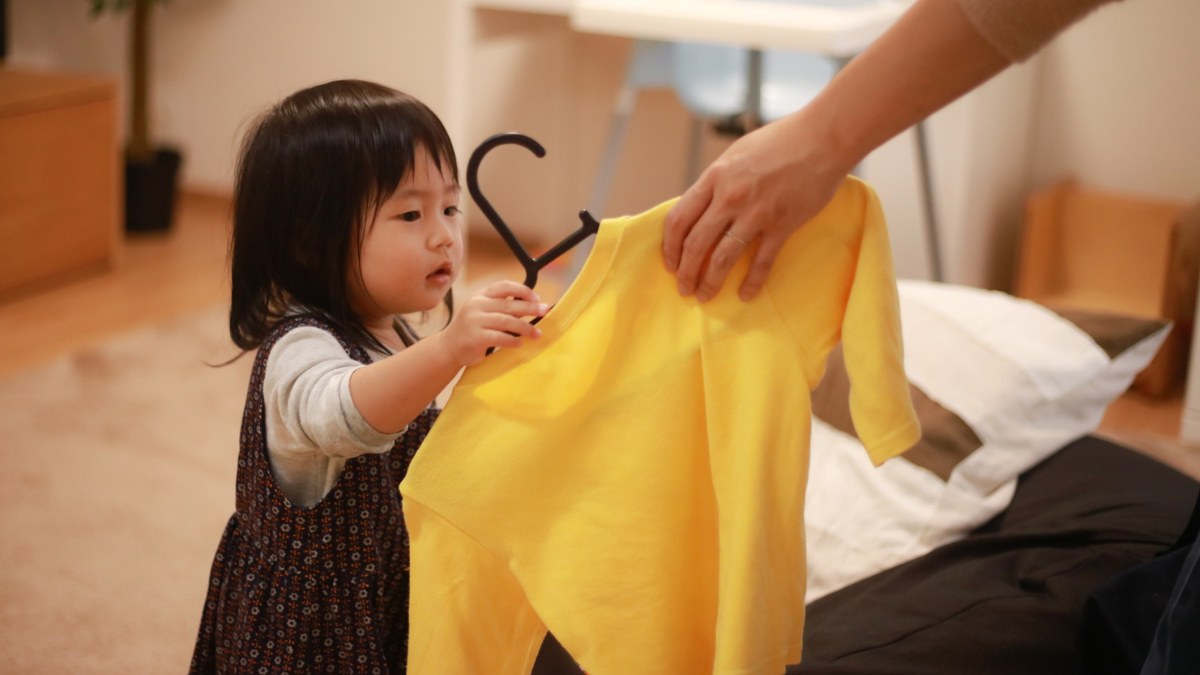Why Do Autistic People Wear Headphones?
Discover why autistic individuals wear headphones and how they provide comfort and relief from sensory overload. Empathy and understanding are key!
.avif)
Why Do Autistic People Wear Headphones?
Understanding Sensory Sensitivity
Autistic individuals often experience sensory processing differences, which can significantly impact their daily lives. These differences can result in sensory sensitivity or sensory overload, making it challenging for them to navigate their environment comfortably. Understanding these sensory processing differences is crucial in providing support and creating a sensory-friendly environment.

Overview of Sensory Processing Differences
Sensory processing refers to how our nervous system receives and interprets sensory information from the environment. Autistic individuals may have differences in the way they process and respond to sensory input, which can affect various sensory modalities such as sound, touch, taste, smell, and sight.
While sensory processing differences can vary from person to person, some common patterns emerge. Autistic individuals may experience either hypersensitivity (over-responsiveness) or hyposensitivity (under-responsiveness) to sensory stimuli. This means they may be more sensitive or less sensitive to certain sensory inputs compared to neurotypical individuals.
Impact of Sensory Overload on Autistic Individuals
Sensory overload occurs when an individual is exposed to an overwhelming amount of sensory input, exceeding their ability to process and cope with it. For autistic individuals, sensory overload can have a significant impact on their well-being and functioning.
During sensory overload, the brain struggles to filter and prioritize sensory information, leading to feelings of overwhelm, anxiety, and discomfort. This can result in various challenges, such as difficulty concentrating, irritability, meltdowns, and withdrawal from social situations.
Understanding the impact of sensory overload on autistic individuals is essential in creating a supportive and inclusive environment. Recognizing the signs of sensory overload and providing appropriate accommodations, such as wearing headphones, can help mitigate the negative effects and promote well-being.
By acknowledging and respecting the sensory processing differences of autistic individuals, we can foster a more understanding and inclusive society. Creating environments that accommodate their sensory needs and providing support can make a significant difference in their comfort and overall quality of life.
The Comfort of Headphones
For autistic individuals, wearing headphones serves as a source of comfort and a way to manage sensory input. Understanding the reasons behind why autistic individuals wear headphones can provide valuable insights into their unique needs and experiences.
Reasons Autistic Individuals Wear Headphones
There are several reasons why autistic individuals choose to wear headphones:
- Noise Sensitivity: Many autistic individuals experience heightened sensitivity to sounds, making them more susceptible to sensory overload. Wearing headphones helps to reduce the intensity of external noises, providing a sense of relief and minimizing the potential for overwhelming auditory stimulation.
- Visual Sensitivity: In addition to noise sensitivity, autistic individuals may also be sensitive to visual stimuli. Wearing headphones can create a physical barrier that shields them from excessive visual input, helping to reduce visual distractions and promoting a sense of calm.
- Self-Regulation: Autistic individuals often use headphones as a self-regulation tool. By controlling the auditory environment, they can create a more predictable and manageable sensory experience. This allows them to better focus on tasks, maintain a sense of control, and regulate their emotional state.
- Comfort and Familiarity: Wearing headphones provides a sense of comfort and familiarity for autistic individuals. The weight and pressure exerted by the headphones can create a feeling of security and grounding. Additionally, the act of wearing headphones may be part of a routine or ritual that brings a sense of familiarity and reassurance.
- Coping with Overstimulation: Autistic individuals may wear headphones as a coping mechanism when faced with overwhelming or overstimulating environments. By blocking out extraneous sounds, they can create a more manageable sensory environment, reducing stress and anxiety.
How Headphones Help Manage Sensory Input
Headphones play a crucial role in managing sensory input for autistic individuals:
- Noise Reduction: Headphones provide a physical barrier that reduces the intensity of external noises. This helps to minimize sensory overload and allows autistic individuals to focus on specific sounds or conversations without being overwhelmed by background noise.
- Selective Auditory Input: With the use of headphones, autistic individuals can choose to listen to specific sounds or music that they find soothing or enjoyable. This selective auditory input helps to redirect their attention and create a more calming sensory experience.
- Predictability and Control: Wearing headphones allows autistic individuals to exert control over their auditory environment. By choosing when and how much sound they let in, they can create a more predictable and manageable sensory experience, reducing the risk of sensory overload.
- Privacy and Personal Space: Headphones also serve as a signal to others that an autistic individual may need privacy or personal space. It can help to deter unsolicited interactions and provide a visible cue that the individual may require some time to themselves.
Understanding the comfort that headphones provide for autistic individuals is essential in creating supportive and inclusive environments. By recognizing and accommodating their unique sensory needs, we can promote their well-being and create a more empathetic and understanding society.
Noise Sensitivity
For autistic individuals, noise sensitivity can be a significant challenge. Everyday sounds that may seem normal to others can become overwhelming and distressing to someone on the autism spectrum. This heightened sensitivity to noise can make it difficult for individuals with autism to navigate and participate in various environments.
Challenges with Noise Sensitivity
Autistic individuals often experience difficulties processing and filtering auditory stimuli. They may find it challenging to distinguish between relevant sounds and background noise, leading to sensory overload. This can result in feelings of anxiety, discomfort, and even physical pain.
The impact of noise sensitivity can vary from person to person. While some individuals may struggle with specific sounds, such as loud conversations or sirens, others may be sensitive to a wide range of noises, including everyday sounds like footsteps or cutlery clinking.
How Headphones Mitigate Noise Sensitivity
Wearing headphones is a common strategy used by autistic individuals to manage and mitigate the challenges associated with noise sensitivity. By blocking or reducing the intensity of external sounds, headphones provide a sense of control and create a more manageable auditory environment.
Headphones designed specifically for noise reduction or noise cancellation can be particularly beneficial. These types of headphones utilize advanced technology to reduce ambient noise, allowing individuals to focus on the sounds they choose to listen to, such as calming music or white noise.
Using headphones as a sensory tool helps autistic individuals regulate their auditory input, creating a more comfortable and predictable environment. It allows them to minimize the impact of overwhelming sounds, enabling better concentration and participation in various activities.
It's important to note that while headphones can be helpful for managing noise sensitivity, they are not a solution for all situations. Autistic individuals may still encounter situations where wearing headphones is not feasible or socially acceptable. In such cases, alternative strategies like using earplugs or seeking a quieter space may be employed.
Understanding and respecting the needs of autistic individuals in relation to noise sensitivity is crucial for creating inclusive and supportive environments. By recognizing the challenges they face and providing accommodations such as allowing the use of headphones when appropriate, we can help individuals with autism navigate the sensory world with greater ease and comfort.
Visual Sensitivity
Autistic individuals often experience heightened sensitivity to visual stimuli, which can be overwhelming and distressing. This sensitivity can manifest in different ways, such as difficulties with bright lights, intense colors, patterns, or crowded environments. Wearing headphones can provide visual relief and help mitigate the challenges associated with visual sensitivity.
Issues with Visual Sensitivity
For individuals on the autism spectrum, visual sensitivity can lead to sensory overload and feelings of discomfort. Bright lights, especially fluorescent or flickering lights, can be particularly bothersome and cause headaches or sensory distress. Similarly, visually stimulating environments with complex patterns or crowded spaces can be overwhelming and contribute to sensory overload.
How Headphones Provide Visual Relief
While headphones primarily address auditory sensitivities, they can also provide visual relief for autistic individuals. By wearing headphones, individuals can block out or reduce the impact of visual stimuli, creating a sense of calm and reducing sensory overload.
Additionally, some headphones come with noise-canceling features that can further enhance the visual relief. These headphones not only minimize auditory distractions but also help to create a quieter and more controlled environment, reducing the impact of visual stimuli.
By wearing headphones, autistic individuals can create a personal sensory barrier that limits the overwhelming visual input from their surroundings. This can provide a sense of control and comfort, enabling them to navigate visually stimulating environments with greater ease.
Understanding the challenges associated with visual sensitivity and the benefits of wearing headphones can contribute to a more inclusive and supportive environment for autistic individuals. By recognizing and accommodating their sensory needs, we can foster empathy and understanding, ultimately promoting a more inclusive society.
Self-Regulation and Calming
Autistic individuals often find comfort and relief by wearing headphones as a means of self-regulation. These individuals may experience sensory overload and heightened sensitivity to certain stimuli, making it challenging for them to navigate their environment. Headphones serve as a valuable tool in aiding self-regulation and promoting a sense of calmness in autistic individuals.
Using Headphones for Self-Regulation
Wearing headphones allows autistic individuals to have control over their sensory environment. By reducing or blocking out external sounds, headphones help to filter and minimize overwhelming auditory input. This control over the auditory environment enables individuals to better focus, concentrate, and regulate their sensory experiences.
Moreover, headphones provide a sense of predictability and familiarity for autistic individuals. The consistent sound isolation they offer can create a more controlled and soothing environment. This predictability helps individuals feel more secure and less anxious in situations that may otherwise be overwhelming.
Benefits of Headphones in Calming Autistic Individuals
The use of headphones has several benefits in calming autistic individuals and supporting their emotional well-being. Here are some key advantages:
- Reduction of noise sensitivity: Autistic individuals often experience heightened sensitivity to sound, which can lead to distress and anxiety. Headphones provide a barrier that helps minimize the impact of loud or unpredictable noises, allowing individuals to feel more at ease and less overwhelmed.
- Enhanced focus and concentration: By reducing auditory distractions, headphones help autistic individuals maintain focus and concentration on tasks or activities. This can be particularly beneficial in educational settings, workplaces, or crowded environments where external noises may hinder their ability to engage fully.
- Promotion of self-soothing: Autistic individuals may engage in self-stimulatory behaviors as a way to self-soothe and regulate their emotions. Wearing headphones can serve as a healthier alternative to certain repetitive behaviors, as it provides a soothing sensory experience and helps redirect excessive sensory input.
- Increased comfort and security: Headphones create a personal space for autistic individuals, providing a sense of security and comfort. This personal bubble helps create a predictable and controlled environment, reducing anxiety and promoting a feeling of safety.
While it's important to acknowledge that not all autistic individuals may choose to wear headphones or find them beneficial, for many, headphones play a vital role in self-regulation and creating a more manageable sensory experience. Understanding and respecting the individual needs and preferences of autistic individuals is crucial in providing support and fostering an inclusive environment.
Empathy and Understanding
Supporting autistic individuals is crucial to creating an inclusive and understanding society. By recognizing and addressing their unique sensory needs, we can foster a more empathetic environment. Wearing headphones is one way in which autistic individuals manage their sensory experiences and navigate the challenges they may face.
Importance of Supporting Autistic Individuals
It is essential to understand the importance of supporting autistic individuals in their sensory needs. Sensory sensitivities can significantly impact their daily lives, making certain environments overwhelming and distressing. By acknowledging and accommodating these sensitivities, we can create a more inclusive and supportive space for autistic individuals to thrive.
Autistic individuals may experience difficulties with sensory processing, leading to sensory overload or sensory-seeking behaviors. Wearing headphones is a coping mechanism that can help them regulate their sensory input and maintain a sense of comfort and control.
Building Empathy and Awareness around Sensory Needs
Building empathy and awareness around sensory needs is crucial for creating a more inclusive society. By understanding the reasons behind autistic individuals wearing headphones, we can foster a greater understanding of their experiences.
By recognizing and accommodating these sensory needs, we can create a more inclusive and supportive environment for autistic individuals. It is essential to promote empathy, understanding, and acceptance to ensure that autistic individuals feel valued and respected in all aspects of life.
Sources
https://www.abtaba.com/autistic-people-wear-headphones
https://www.crossrivertherapy.com/why-do-autistic-people-wear-headphones
https://www.cogentica.com/why-do-autistic-people-wear-headphones
https://www.goldstarrehab.com/parent-resources/why-do-autistic-people-wear-headphones
https://www.adinaaba.com/why-do-autistic-people-wear-headphones




%20(1).jpg)

%20(1).jpg)





%20(1).jpg)
.jpg)
.jpg)